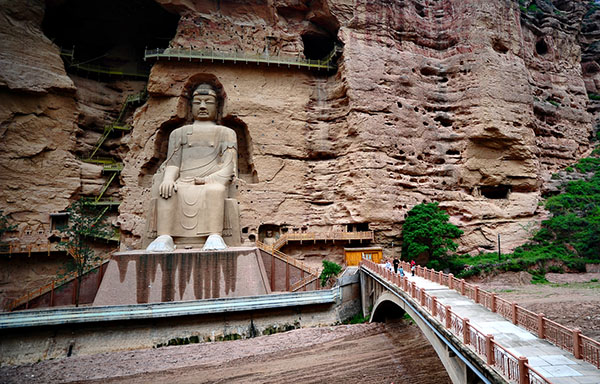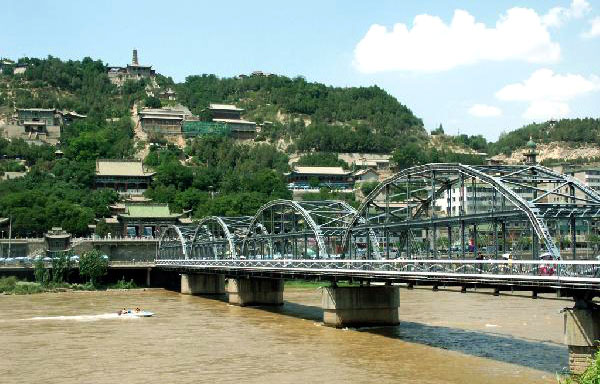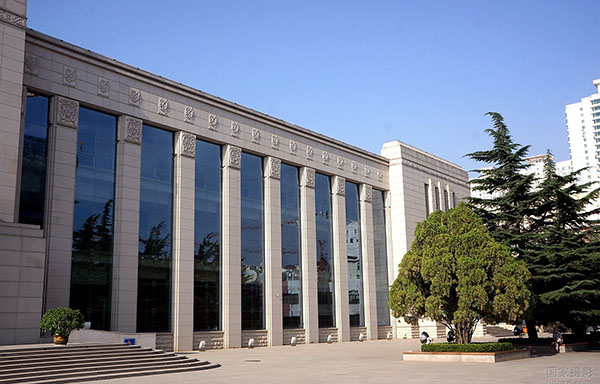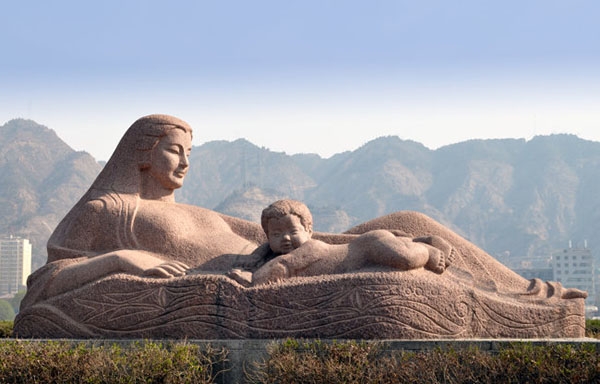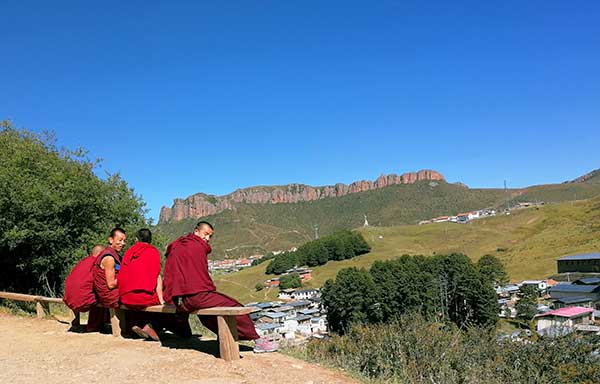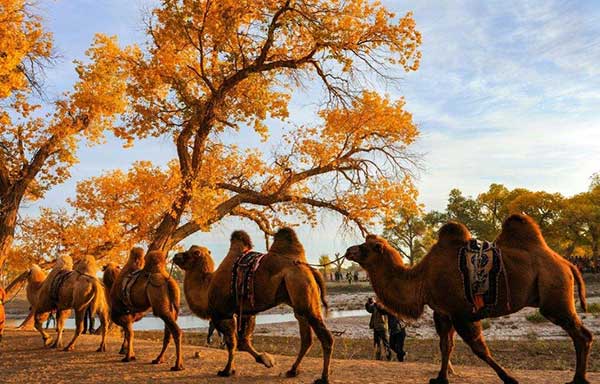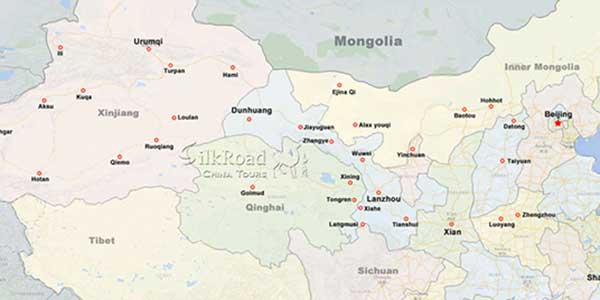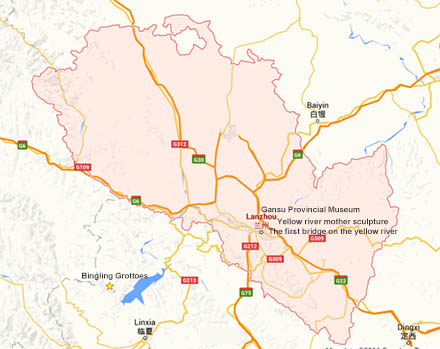 Zhongshan Bridge, also called the first bridge over the Yellow River, lies at the foot of Bai Ta Mountain and in front of Jin Cheng Pass in Lanzhou city, the capital of Gansu Province.
Zhongshan Bridge, also called the first bridge over the Yellow River, lies at the foot of Bai Ta Mountain and in front of Jin Cheng Pass in Lanzhou city, the capital of Gansu Province.
Before Zhongshan Bridge was built there were many floating bridges over the Yellow River, but only one existed for a relatively long period. This bridge was called Zhen Yuan Floating Bridge and was made up of more than 20 ships, tied up by ropes and chains. It floated on the river in order to help people pass over, but it was neither solid nor safe enough. Almost every year floods destroyed the bridge or even killed people. Problem also arose in the winter, when ice would build up on the river, so the bridge would have to undergo the costly process of being disassembled and then re-built in the spring. Used for over 500 years, the Zhen Yuan Floating Bridges was finally retired in 1909, when an iron bridge was built. This new bridge is what we call the First Bridge over the Yellow River.
In the year 1907, under the proposal of local officers in Lanzhou and Gansu and the help of a Germany businessman, the Qing Government began to build this first iron bridge over the upper reaches of the Yellow River. All materials, even the rivets, were transported from Germany to China using ships, trains, carts and any other means possible. The bridge was completed in two years, and named 'Lanzhou Iron Bridge over the Yellow River'. In 1942, to commemorate Dr. Sun Yat-sen, the bridge was re-named Zhongshan Bridge (Zhongshan is the Chinese name of Dr. Sun Yat-sen).
The service life of the Zhongshan Bridge expired in 1989, and so about 10 bridges have already been built nearby. Even more bridges are planned to replace the Zhongshan Bridge's work, but none can replace its great value in history or its great work over its 80 years. The Zhongshan Bridge will be remembered forever as a piece of history and a cultural relic.
Gallery
Attractions in the area
Related Tours
General Information
Alias: Zhongshan Bridge
Loc: In Lanzhou City
Entrance: 0 RMB
Open Time: All day
Relevant blogs
-
How did the name of Tianshui in Gansu come about?
The name Tianshui is very pleasant to the ear, and it reminds one of that exquisitely beautiful verse, "After getting drunk, one doesn't know if the sky is in
-
The 8th Silk Road Hotel Festival was successfully held i
On December 27th, the "8th Silk Road Hotel Festival" grandly opened at the Yujing International Hotel in Zhangye. This hotel festival gathered industry experts,
-
The Karez Irrigation System in Turpan has been selected
On September 3rd, at the 75th Executive Council Meeting of the International Commission on Irrigation and Drainage held in Sydney, Australia, the 2024 (11th bat
-
What is the connection between "dragons" and "snakes
In traditional Chinese culture, the snake has a dual identity of auspiciousness and danger. Ancient people believed that the snake not only possesses divine cha
-
Endangered Przewalski's Horses Spotted at Dunhuang Yume
<p>In early February, a group of special "visitors"—the Przewalski's horses—appeared at the Dunhuang Yumen Pass scenic area in Gansu Province, a U
-
The Fourth Dunhuang Cultural Tourism Supplier Conference
On the morning of February 18th, the Fourth Dunhuang Cultural Tourism Supplier Conference in Northwest China commenced at the Dunhuang International Convention






